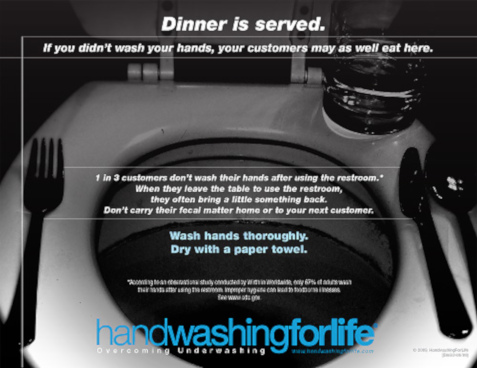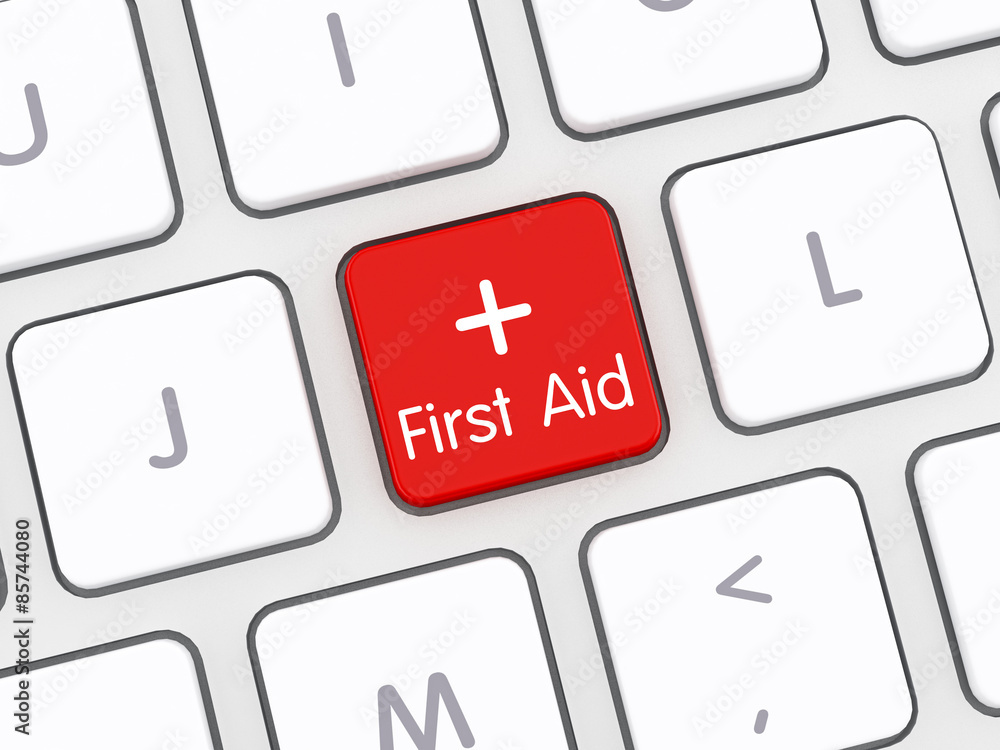
- /
A food poisoning event at your restaurant implies going through a bad patch financially. Lawsuits that follow are typically an enormous drain on the food businesses’ budget.
Especially if your establishment is directly linked to a particular foodborne illness outbreak.
And even if by the end of the litigation, you’re not tapped out, such an event can crush your reputation once and for all.
Food poisoning incidents in Australia keep reminding us we should be dead serious about food quality and safety. And let’s not forget foodborne illness outbreaks are not that rare at all in the food industry setting.
Food premises are linked to an alarming 54% of foodborne illness outbreaks in Britain in the 90’ and 45% in the US.
So it’s much better to act on the issue straight off than get through the actual ordeal of a food poisoning mishap. And you’ve got a few cards up your sleeve.
A powerful antidote? Keep your food facilities shipshape, prioritise food safety and improve hand hygiene at your restaurant.
This guide will help you avoid food handling mistakes and spend fewer resources fixing them.
Read on to learn …
✔Get Informed on the Food Poisoning Basics
✔Swing Into Action: Devise an Ambitious Food Safety Program
- Use Proper Hand Washing Procedures
- Employ Safe Food Handling Practices
- Encourage Stay-at-Home Policy for Sick Workers
- Keep Washrooms Clean and Washroom Supplies Regularly Replenished
1. Get Informed on the Food Poisoning Basics
Australia is being struck with an estimated 5,4 million cases of food poisoning yearly. These cases result in 120 deaths a year.
Bacteria, viruses, and parasites are repeat offenders here. And if not controlled by proper food handling, they can compromise your customers’ health.
What Are the Most Common Restaurant Food Poisoning Pathogens?
Even though food may look, smell or taste perfectly safe, it can be unsafe to consume. Often food contamination can be identified only after the first food poisoning symptoms occur.
Yet your management and especially your food handlers should know which risks poor food handling brings.
According to the Centers for Disease Control and Prevention (CDC), there are 31 identified pathogens that cause foodborne illness.
Below is a list of the most common foodborne pathogens in the restaurant setting. Along with the most common ways of transmission and effective prevention measures.
| Name of the Pathogen | Potential Source of Contamination in the Food Preparation Area | Prevention Measures |
| Salmonella | Undercooked meat, poultry and eggs | Respect cooking times and adjust the temperature when preparing ground beef, poultry and eggs |
| Contaminated fruits and vegetables | Rinse fruits and vegetables before cutting and peeling | |
| Unwashed hands, especially after handling money or using the toilet | Wash hands properly after using the toilet and handling raw meat and poultry | |
| Sanitise kitchen worktops regularly | ||
| Campylobacter | Contaminated groceries and untreated water supply | Employ stringent food supply control and avoid serving untreated water |
| Unpasteurised dairy products | Serve only heat treated dairy products | |
| Undercooked or raw poultry and meat | Use separate cutting boards for raw and cooked foods | |
| Clostridium perfringens | Buffet served food allowed to sit at room temperature | Avoid leaving prepared food at temperature danger zones |
| Undercooked and inefficiently refrigerated food | Respect safe cooking times and temperatures and follow food safety cooling procedures | |
| E. Coli O157:H7 | Unpasteurised dairy products | Serve only heat treated dairy products |
| Undercooked beef | Serve only beef that is prepared at safe temperatures in proper cook times | |
| Hand washing non-compliance after using the toilet | Enforce stringent hand washing rules and make it a part of your food premises culture | |
| Listeria monocytogenes | Raw seafood and sprouts, undercooked meat and poultry | Use safe cooking temperatures and reheat precooked foods to 165°F |
| Unsafely stored deli meats and hot dogs | Sanitise your prep areas and store food safely | |
| Norovirus | Ready-to-eat salads, sandwiches and pastry prepared by a contaminated food handler | Create a strict reporting protocol and keep a record of infected workers |
| Fresh fruit, shellfish and deli meats | Monitor your staff’s hand hygiene compliance and ensure regular cleaning of kitchen surfaces and utensils | |
| Staphylococcus aureus | Foods that require prolonged handling such as sandwiches, pastry, salads and fruit bouquets | 20 second hand washing with soap and water protocols |
| Processed meats | Redistribute workers who come with cuts and wounds, eye or nose infections | |
| Toxoplasma gondii | Contaminated meat | Keep a detailed food temperature log and use food thermometers |
| Using same or unclean utensils and prep stations for cooked and raw food | Clean utensils and prep stations thoroughly after handling raw meat | |
What Foods Can Cause Food Poisoning?
Foodborne illnesses are typically caused by hand-to-food contamination, unsafe food storage or preparing food on contaminated surfaces. But certain foods will be more likely to cause food poisoning than others.
How you handle these high-risk foods is critical for minimising the risk contamination.
They allow for no preparation mistakes, so you should keep them on your radar. Proper cooking techniques, handling practices, food prep surface sanitation – everything should work together to lower the risks.
Now, below are the foods that you should be watchful with:
- Raw or undercooked fish products and sushi
- Unpasteurized milk and eggs
- Meat, poultry, ground beef and shellfish
- Unwashed fruits and vegetables, served raw
- Processed meats, cheese and juice
2. Swing Into Action: Devise an Ambitious Food Safety Program
A stringent and effective food safety program is worth dollars to a food business. It’ll spare you a headache over huge expenses linked to an outbreak event.
Food safety supervisors are responsible to ensure the program is followed. But to put in place practices that work, you need an establishment-wide approach.
It’s far from being far-fetched. But the following elements should be included if you’re after better results.
Use Proper Hand Washing Procedures
Unwashed hands are among the most common pathways for food contamination in a restaurant kitchen.
And having no proper hand washing compliance strategy means you risk exposing your restaurant patrons to diseases from not washing hands.
Food businesses can’t afford to make any mistakes hand hygiene-wise. There’s too much at stake. So, here’s how to avoid them:
- Train your food handlers on proper hand washing techniques
- Make handwashing compliance compulsory. Get the message of urgency across your staff organisation. Everyone from the executive chef down to helpers and dishwashers should be aware of this.
- Make hand washing and drying facilities available to your food handling staff. Keeping them at hand and within sight has been proven to enhance hand washing compliance.
- Display highly effective visual reminders.
When are food handlers required to wash their hands?
Instruct your staff to respect all the hand washing instances and you’ll prevent disease-causing germs from multiplying in your kitchen. Food handling staff should wash their hands each time risk of contamination is present:
- before starting their shift
- after using the toilet
- after handling money or waste
- after cleaning
- after eating
- after handling raw food ingredients
- after making a break
- and after blowing your nose
How do you wash your hands in a commercial kitchen?
It’s high-priority your food handlers don’t just work off their hand washing, but do it properly.
Below are the 6 hand washing steps they should follow:
- Wet hands with warm water to remove visible traces of dirt.
- Apply liquid soap to your hands.
- Rub hands together for 20 seconds using soap. Cover palm areas, rub the back of the hands, between fingers and under the fingernails.
- Rinse hands for at least 20 seconds while pointing fingers downwards.
- Use a paper towel when turning the tap off.
- Dry hands with a paper towel or a hand dryer.
Employ Safe Food Handling Practices
All Australia-based restaurants and food businesses should comply with Australian Food Safety Standards. Yet, you won’t be able to achieve compliance if you don’t train your staff to take safe food handling seriously.
Restaurant management should be absolutely unambiguous here. Sloppy hand hygiene, undercooked food and unclean cutting boards can spell disaster for your restaurant business. And your staff should be clear about this.
All food handling stages should be done right. From storage and preparation to thawing, cooking and serving.
Below are the basic food handling rules to keep reiterating in during staff training:
- Sanitize countertops, cutting boards and utensils after coming into contact with raw meat, poultry and fish. You can also use colour coded cutting boards.
- Wash raw fruits and vegetables thoroughly before serving.
- Don’t leave perishable food at room temperature for more than 2 hours, and for more than 1 hour if the room temperature is above 90 °F (32.2 ºC).
- Don’t keep fresh poultry, fish and ground meats refrigerated for longer than 2 days. And beef, veal, lamb, or pork for longer than 3 to 5 days. Cook or freeze the meats within these time limits.
- For safest thawing method, thaw meat and poultry in the refrigerator. Ensure the juices do not drip onto other refrigerated food. Cook the meats immediately after thawing.
- Ensure safe cooking temperatures. Use food thermometers to check minimum internal temperatures:
– For raw meat chops and steaks (beef, pork, lamb and veal): 145 °F (62.8 ºC)
– For ground meats (beef, pork, lamb, and veal): 160 °F (71.1 ºC)
– For poultry: 165 °F (73.9 °C)

Image from FOODnavigator.com
Encourage Stay-at-Home Policy for Sick Workers
If a food handler is ill, there are high chances the pathogens will be spread to your customers via food.
So, food handlers should immediately stop working around food if they suspect they may be ill. They should report their condition to the supervisor as soon as the first symptoms occur.
Symptoms such as stomach cramps, diarrhoea, vomiting, sore throat or fever are serious enough to report. Also, take extra caution if a member of your staff comes down with any of the following diseases:
- Typhoid,
- Cholera,
- hepatitis A,
- Tuberculosis, and
- Gastroenteritis.
Food professionals often take things for granted. Thinking an average healthy adult’s immune system can handle the presence of pathogens in food. And this is problematic.
The truth is, everyone is susceptible to foodborne pathogens. Although pregnant women, ageing adults and young children are the most vulnerable.
A 1993 E. Coli outbreak in the US-based Jack-In-The-Box fast food chain brings home the importance of safe food handling. It reminds us it’s not just a grumbly stomach, but something that can sicken 700 adults and kill 4 young children.
Keep Washrooms Clean and Washroom Supplies Regularly Replenished
Good hygiene standard in customer toilets is one of the indicators of a good restaurant. This reflects highly on your restaurant brand perception.
Yet the condition of staff toilets is important for an entirely different reason. The faecal-hand-oral route of food contamination is reported to be the most common cause of foodborne illness.
So, keeping your restaurant washrooms well kept and fully stocked is critical for breaking the chain of food contamination. As are the sustained efforts to enhance hand washing compliance in staff toilets.
Follow the below practices to prevent faecal-hand-oral contamination at your restaurant:
- Ensure liquid soap dispensers are regularly replenished. Automatic, no-touch technology dispensers are designed to minimise cross-contamination and are perfectly suited both for use in washrooms and professional kitchens.
- Keep paper towel dispensers fully-stocked and your air hand dryers in working order. Or consider an economic, environment-friendly hand drying alternative – the continuous cloth towel.
It stands apart as the most absorbent and practical alternative. It contains separate chambers for new and used towel portions and gets sterilized at 150°C. So, it’s also one of the smartest options hygiene-wise.
- Throw in automatic hand sanitiser dispensers. Nothing can beat the traditional hand washing with soap and warm water and drying them out thoroughly afterwards. But hand sanitisers are a powerful addition.
A dash of sanitiser after regular hand washing can help stamp out germs, which is super-relevant in a professional kitchen. While it’s indispensable if hand washing facilities aren’t available at the premises.

Image from handwashingforlife.com
Find Your Washroom Hygiene Go-To Source
Now, dropping the curtain on our exploration of the food poisoning issue in restaurants, we hope we brought the message home.
It’s not until you’re fully informed of the foodborne pathogens and the risks they pose to your guests, that you’ll be able to safeguard your business from food poisoning incidents.
It’s one of the major challenges in the industry. So, let Fresh & Clean be your trusted partner and join you in your efforts.
We’re working full blast to accommodate our clients when it comes to their workplace hygiene. We’re a leading Australian provider of washroom services on a rental basis.
So, if you want a safe pair of hands for handling your washroom hygiene product supply, get in touch with us today.






